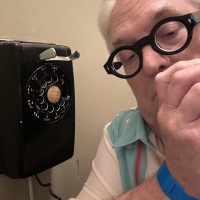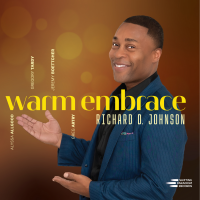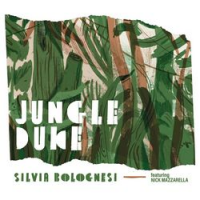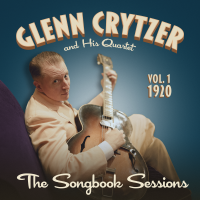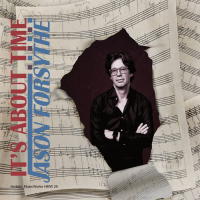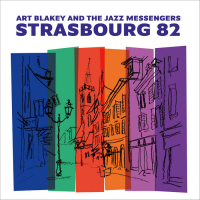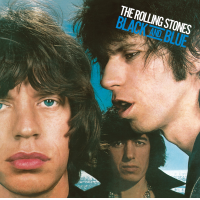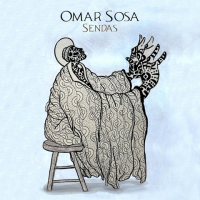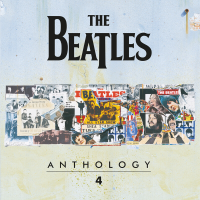Home » Jazz Articles » Album Review » Allman Brothers Band: At Fillmore East
Allman Brothers Band: At Fillmore East
After the birth of the blues in the Mississippi Delta, it journeyed up Highway 61 to Chicago during the great migration of southern African Americans of the 1940s and became electrified. After further development in Chicago, the Blues hopped a cargo plane for Europe where it incubated with British working class youth. When it returned to the United States, the blues took the form of The Beatles, Rolling Stones, The Animals, John Mayall and the Blues Breakers, and Led Zeppelin, (after whom rock music was never the same). Upon arriving back in the United States, the music returned to the South and showed up in Macon Georgia at the home of Duane and Gregg Allman. The Allmans grew up in a culturally and musically rich period and region. While Gregg excelled on the guitar and keyboards and developed a distinctive, readily identifiable vocal style, it was Duane who was to be the true innovator. Duane Allman was to become the premier slide guitarist in the same way that Jimi Hendrix had become the premier electric guitarist before their early deaths.
After the demise of the brothers' fledgling bands The Second Coming and Hourglass, Duane and Gregg Allman formed their now famous self-titled band. In March and June of 1971, the Allman Brother Band performed at the fabled Fillmore East auditorium in New York City, recording the concerts. The announcer's, "Okay, The Allman Brothers Band..." followed by three hi-hat claps introduce the brother's masterpiece, perhaps the most coherent and perfectly integrated rock/blues performance on record.
The original release was taken from a March 12 and 13, 1971 series of shows under the title, The Allman Brothers Band at Fillmore East. This recording was originally released on vinyl and has seen at multiple releases on compact disc with various stages of sonic cleansing. While a great musical document, The Allman Brothers Band at Fillmore East remains a robust torso, not fully complete. Songs from the Fillmore concerts not included on The Allman Brothers Band at Fillmore East are found strewn across Eat A Peach ("Trouble No More," "One Way Out" and "Mountain Jam"), Duane Allman: An Anthology ("Don't Keep Me Wondering") and The Allman Brothers Band: Dreams ("Drunken-Hearted Boy").
It was not until the release of The Allman Brothers Band: The Fillmore Concerts that all of the Fillmore performances were collected in one release. "One Way Out" was the only song not actually recorded on March 12th or 13th. It was recorded on June 27, 1971 at the last Fillmore concert before the hall closed. "One Way Out" had been performed during the March shows, but producer Tom Dowd felt that the June performance was the definitive one. This re-collection of all of the songs from the Fillmore shows is the first reason I chose to include The Allman Brothers Band: The Fillmore Concerts rather than the original The Allman Brothers Band at Fillmore East. A second reason was that this re-collection conveniently brought together the songs that completely define the Allman Brothers Band sound and illustrate the effect of that sound on the Blues and its offshoot, Southern Rock.
From the opening bars of Willie McTell's "Statesboro Blues," The Allman Brothers Band: The Fillmore Concerts is an electric blues/rock exhibition. The survey includes Texas Blues ("Stormy Monday"), Chicago Blues ("Trouble No More"), and Mississippi Delta Blues ("Done Somebody Wrong"). In addition to cover material, the Allmans include the originals "In Memory of Elizabeth Reed" and their definitive blues statement, "Whipping Post." These songs are propelled by a dual lead guitar and drums format and the fat sound of a Hammond B3 organ. The effect is one of a "Wall of Sound." It is a sound that is immediately identifiable with the Allman Brothers Band.
The true brilliance of this live recording is in the shorter pieces. The longer pieces ("Whipping Post," "You Don't Love Me," and "Mountain Jam") have their moments, but those moments are diluted in the self-indulgent noodling typical of many 1970's live performances. If The Allman Brothers Band: The Fillmore Concerts contained only "Statesboro Blues," "Stormy Monday" and "One Way Out," it would still have a place as one of the finest live recordings ever released.
"Statesboro Blues" and "One Way Out" have Duane Allman's dense and precise slide guitar pitted against Richard Betts' round lead guitar, with "One Way Out" providing Betts with his finest recorded guitar solo. "Stormy Monday" juxtaposes Allman and Bett's distinct lead styles in an orgy of perfect blues phrasing. Gregg Allman's jazzy organ interlude is an added delight.
"Statesboro Blues" is the only song of the three mentioned that has been released in other recorded versions. A studio version recorded at the Capricorn studios in February of 1970. This is the earliest released performance and shows the band competent in their performance with elements of Duane's accompaniment and solo slide guitar playing in the Fillmore Concerts version already being formed, but having reedy sonics and a slightly dragging tempo. The middle performance comes from The Allman Brothers Band Live at Ludlow Garage 1970. Recorded April 11th, this is the longest of the three versions, clocking in at 8:09. It is a loose, sure performance, more full-bodied than the studio version. Gregg Allman's goes off mike several times and Duane's slide vision is still not fully realized revealing why this had not been released earlier. The song has the surprise for those used to the Fillmore version in that just when you think the song is over, it cranks up for five more minutes of Duane's slashing but accurate slide guitar. There is a definite evolution between the studio version and the Fillmore version. Listening to all three one after another is like using a fine tuning knob to achieve the perfect performance, which the Fillmore "Statesboro" is. It would be interesting to hear alternate versions of "One Way Out." But, then again, maybe not. What occurs on the Fillmore recording is already perfection as the entire set, even in its less than perfect moments.
The Ten Best Live Rock Recordings
Track Listing
Statesboro Blues; Done Somebody Wrong; Stormy Monday; You Don't Love Me; Hot 'Lanta; In Memory of Elizabeth Reed; Whipping Post.
Personnel
Allman Brothers Band
band / ensemble / orchestraDuane Allman
guitarGregg Allman
organ, Hammond B3Dickie Betts
guitarBerry Oakley
bass, electricButch Trucks
drumsJaimoe Johanson
drumsGregg Allman: organ, piano, vocals, Dickey Betts: guitar, Duane Allman: guitar, slide guitar, Thom Doucette: harmonica, Jai Johanny Johanson: conga, drums, timbales, Berry Oakley: bass, Butch Trucks: drums, timbales, Bobby Caldwell: percussion.
Album information
Title: At Fillmore East | Year Released: 1971 | Record Label: Polydor Records
Tags
About Allman Brothers Band
Instrument: Band / ensemble / orchestra
PREVIOUS / NEXT
Support All About Jazz
 All About Jazz has been a pillar of jazz since 1995, championing it as an art form and, more importantly, supporting the musicians who make it. Our enduring commitment has made "AAJ" one of the most culturally important websites of its kind, read by hundreds of thousands of fans, musicians and industry figures every month.
All About Jazz has been a pillar of jazz since 1995, championing it as an art form and, more importantly, supporting the musicians who make it. Our enduring commitment has made "AAJ" one of the most culturally important websites of its kind, read by hundreds of thousands of fans, musicians and industry figures every month.

